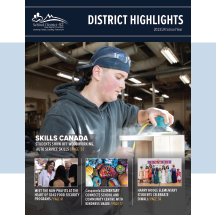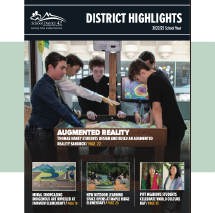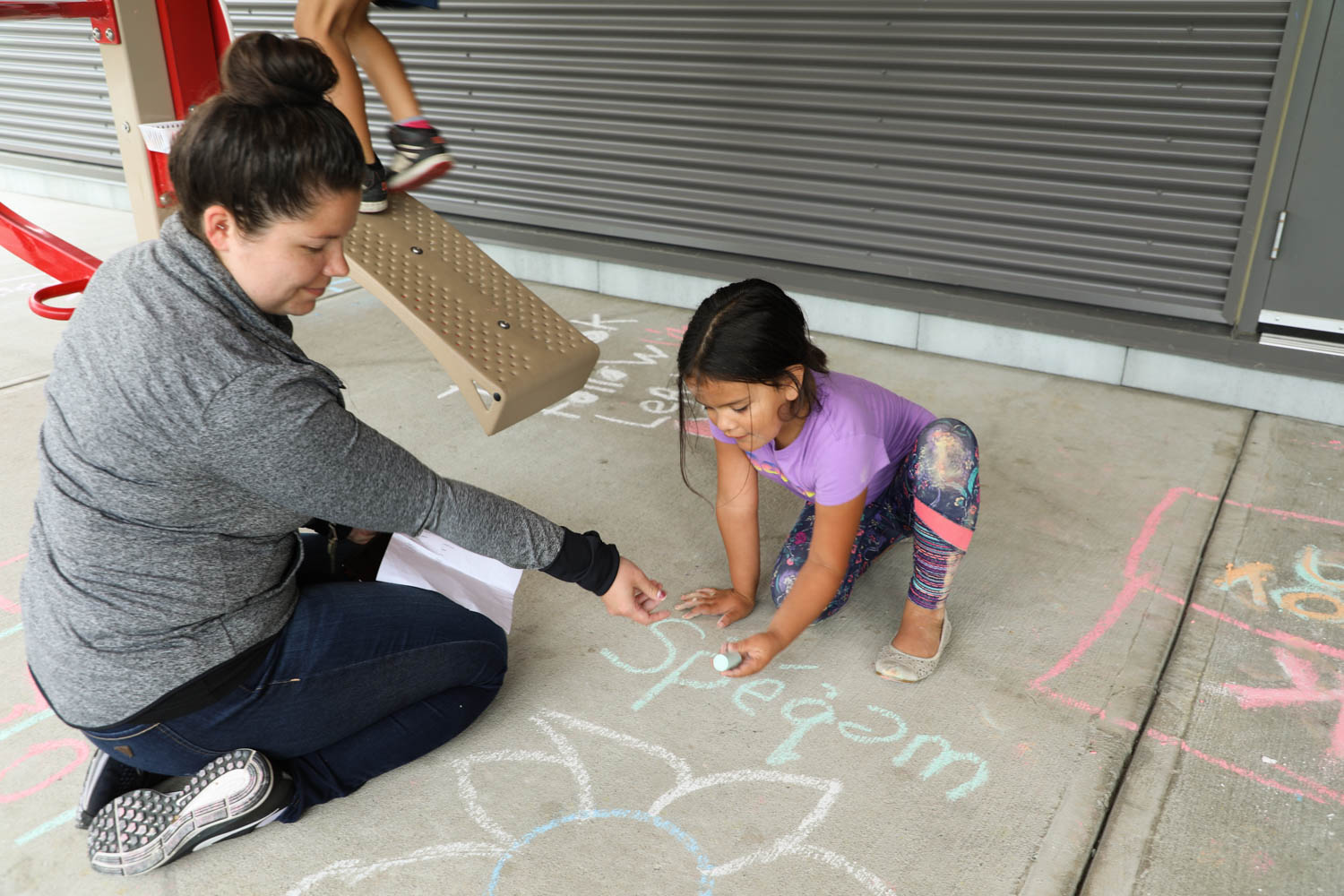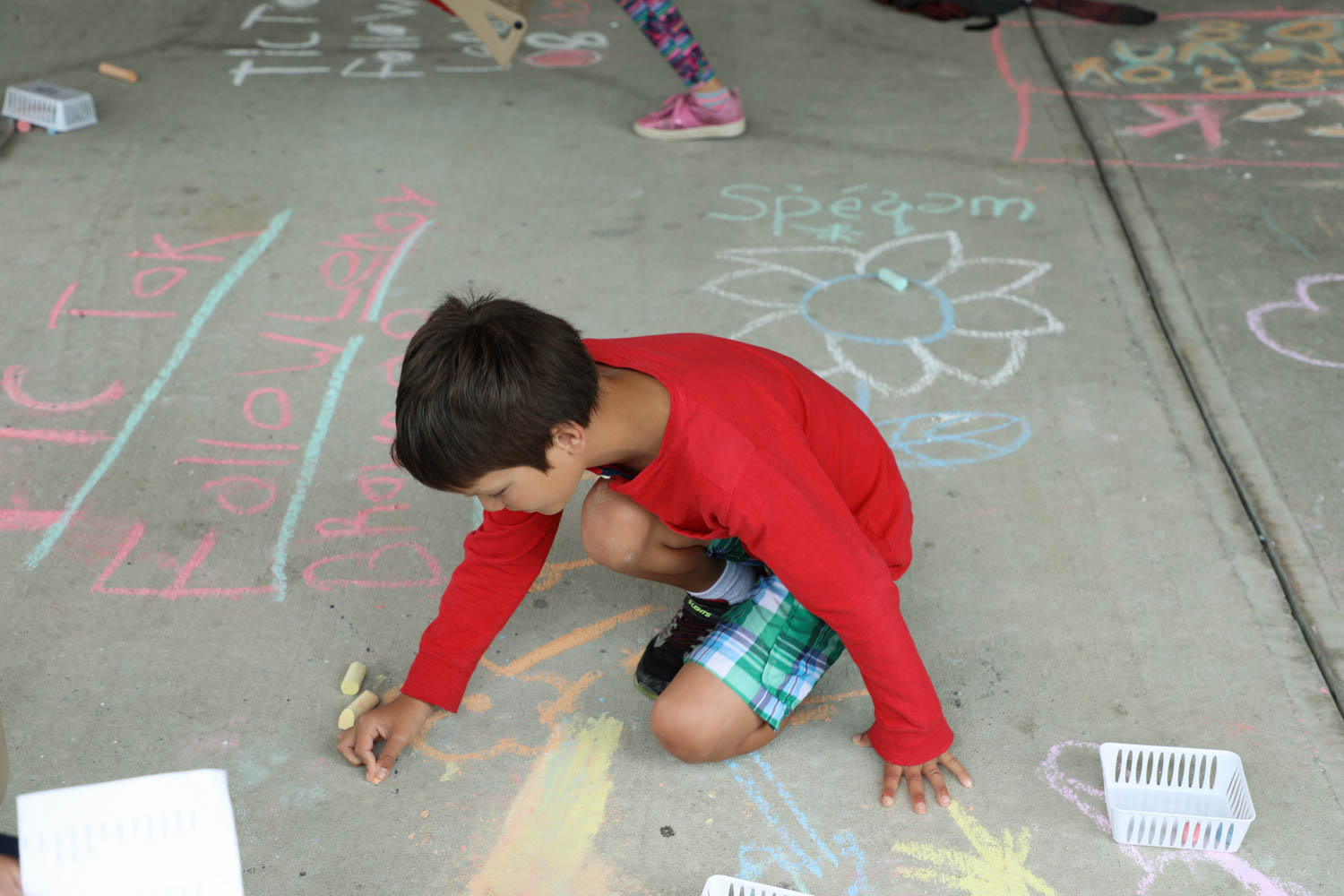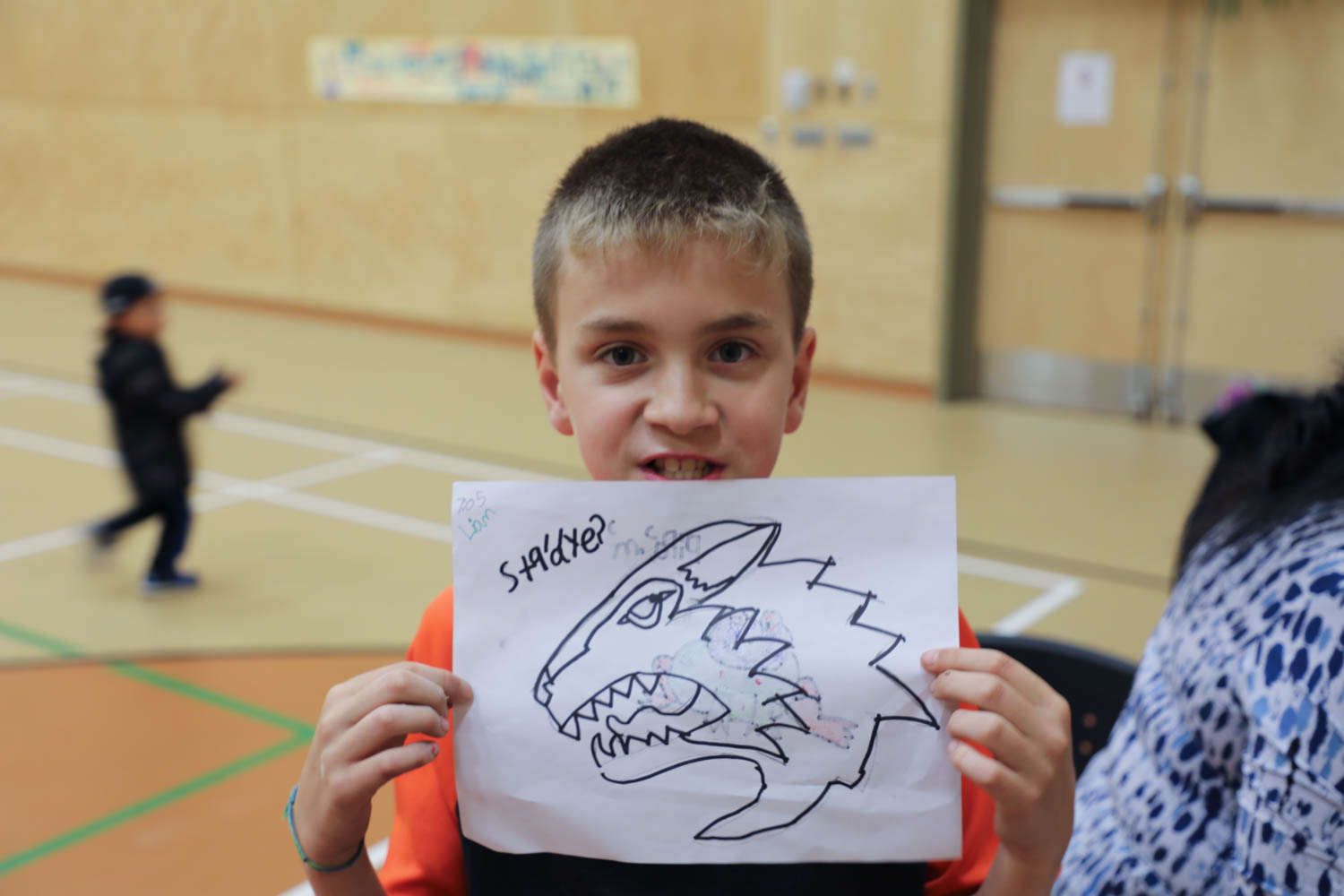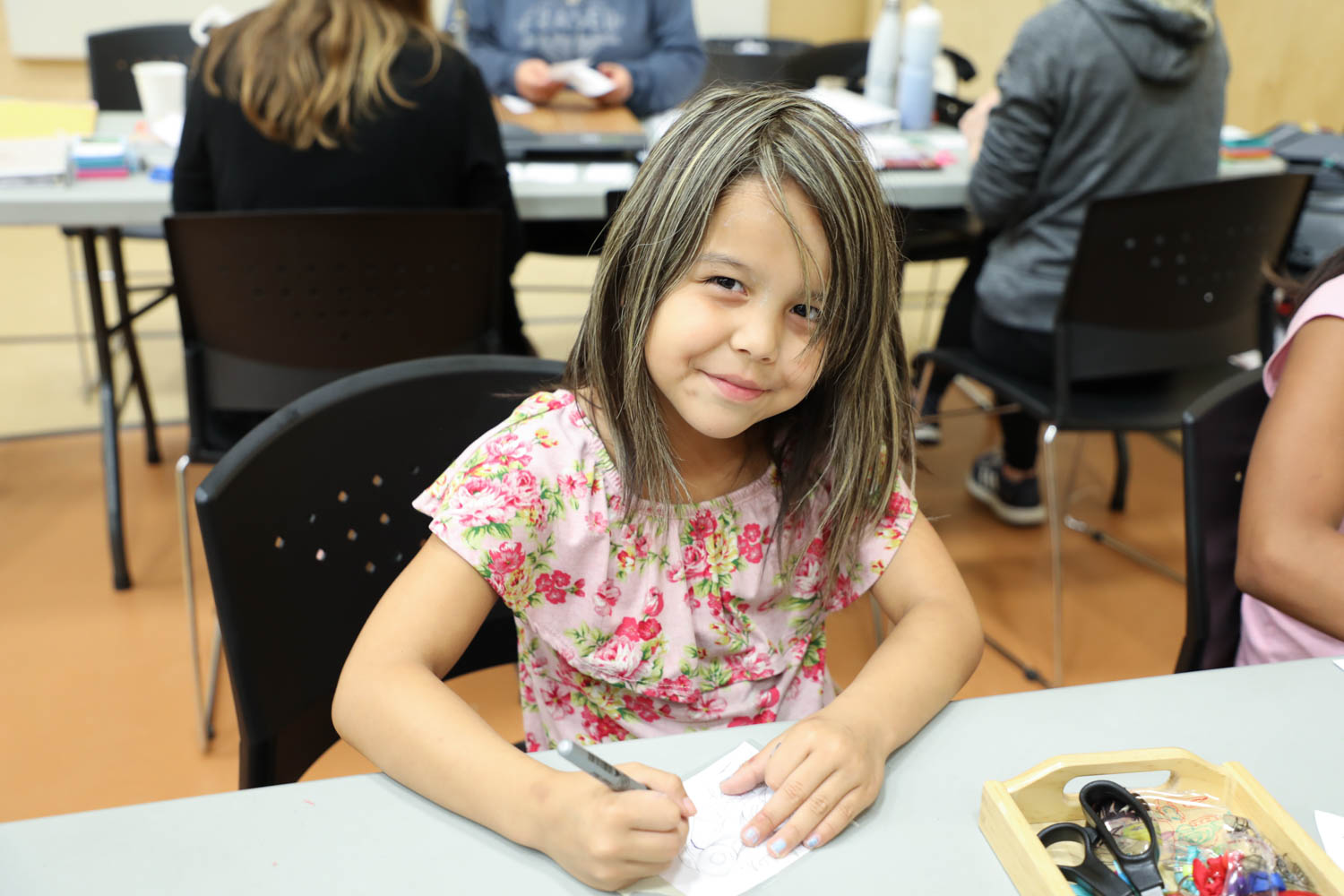It is a warm, overcast July morning and Katzie language instructor Leah Meunier is leading a scavenger hunt with a group of enthusiastic children along a riverside trail in Pitt Meadows.
The elementary-aged students from the Katzie First Nation hold laminated flash cards with pictures and hən̓q̓əmín̓əm̓ names for different nature words – flower, rock, stick, blackberries, thimbleberry, fern, Douglas fir, to name a few.
When a student spies a feather, Meunier asks the group to repeat the word in hən̓q̓əmín̓əm̓.
Today’s scavenger hunt is just one of the fun, experiential activities taking place at the Katzie Summer Learning School, a new partnership program with Maple Ridge – Pitt Meadows School District No. 42.
Like other SD42 summer learning programs, this three-week school focuses on literacy and numeracy skills, but it also incorporates traditional language.
“It’s fun. We can come here and do all the activities, and I get to learn about the language: the animals and colours and the games. Counting too,” says Liam, a Grade 5 student.
Katzie Nation has been running summer programs for kids for years, but this is the first collaboration with the school district. Meunier likes the idea of partnering the academics with the cultural component.
“I think that’s vitally important. This summer program came to fruition because the right people came together as a team with a shared vision,” says Meunier. “The success is based on a great team effort and collaboration between SD42 and Katzie.”
Meunier has worked closely with Nelie Meedin, a Montessori teacher from Hammond Elementary, to plan the summer lessons.
“We’re pretty much implementing everything we would do in the school system for Applied Design Skills and Technology (ADST) and Science, Technology, Engineering and Mathematics
(STEM) and hands-on creative, but then incorporating the hən̓q̓əmín̓əm̓ Katzie language in all aspects of their learning,” says Meedin.
Yesterday, for instance, students created chalk art outside the Katzie Health Centre that focused on learning hən̓q̓əmín̓əm̓ names for different plants found in their community. Other activities included creating Coast Salish-inspired artwork featuring three culturally symbolic animals: Hummingbird, Wolf and Frog.
At another activity station, students learned the traditional bone game known as ‘Slahal’ from a Katzie elder with help from an SD42 Ab Ed teacher who will assist the students in sharing the game in their school classrooms this fall.
“I love seeing the students engaged in their own culture,” says Meedin. “Identifying with their culture but also the basic lessons of Katzie culture: gratitude, kindness, giving, sharing their ideas, sharing their learnings, sharing anything that’s been given to them – they gift to others. They are going to go back and teach somebody else.”
The idea for a Katzie summer learning program was first discussed at an SD42 Aboriginal Education Advisory Committee meeting a few years ago.
“It is exciting to see a summer school program take shape for Katzie First Nation children, especially because it includes a language program in hən̓q̓əmin̓əm̓ for our students. I had hoped that we might support a hən̓q̓əmin̓əm̓ language program through the school district – so it is very gratifying to have this programming in place,” said Superintendent Sylvia Russell. “I am very thankful for Leah Meunier’s expertise and support. We could not have offered this unique opportunity without her tremendous support.”
Meunier, who is involved with curriculum development between SFU and Katzie, also co-teaches weekly language classes for Katzie youth with her sisters, Cheyenne Cunningham and Kaitlyn Cunningham, both of whom worked at the Katzie Summer Learning School.
She is pleased that the young students now have further opportunities to learn traditional language this summer.
“This is the first time that the kids have had exposure to the language every single day,” said Meunier, who noted that students in the program are paired as sibling groups so they can practise language at home. “I see them in the community, and something as simple as ‘Hello’ and they will answer me back. Or ‘How are you?’ Just simple basic conversation and they understand it. So, they are going to be our next teachers. My hope is that this is only the first of more to come and the program will only get better over future years.”
“I spy” game played in hən̓q̓əmin̓əm̓ students engaged in a neighborhood walk. #langauge #hən̓q̓əmin̓əm̓ #katzie #sd42 #connections #inclusion #community #nature @SD42ABEDNEWS @sd42news pic.twitter.com/1FJopsRWjb
— Nelie Meedin (@N_Meedin) July 16, 2019

